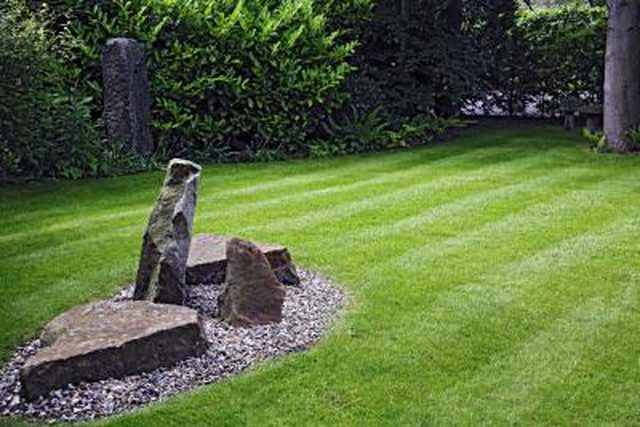Bulbs
Flower Basics
Flower Beds & Specialty Gardens
Flower Garden
Garden Furniture
Garden Gnomes
Garden Seeds
Garden Sheds
Garden Statues
Garden Tools & Supplies
Gardening Basics
Green & Organic
Groundcovers & Vines
Growing Annuals
Growing Basil
Growing Beans
Growing Berries
Growing Blueberries
Growing Cactus
Growing Corn
Growing Cotton
Growing Edibles
Growing Flowers
Growing Garlic
Growing Grapes
Growing Grass
Growing Herbs
Growing Jasmine
Growing Mint
Growing Mushrooms
Orchids
Growing Peanuts
Growing Perennials
Growing Plants
Growing Rosemary
Growing Roses
Growing Strawberries
Growing Sunflowers
Growing Thyme
Growing Tomatoes
Growing Tulips
Growing Vegetables
Herb Basics
Herb Garden
Indoor Growing
Landscaping Basics
Landscaping Patios
Landscaping Plants
Landscaping Shrubs
Landscaping Trees
Landscaping Walks & Pathways
Lawn Basics
Lawn Maintenance
Lawn Mowers
Lawn Ornaments
Lawn Planting
Lawn Tools
Outdoor Growing
Overall Landscape Planning
Pests, Weeds & Problems
Plant Basics
Rock Garden
Rose Garden
Shrubs
Soil
Specialty Gardens
Trees
Vegetable Garden
Yard Maintenance
Growing Grass in North Carolina
Growing Grass in North Carolina. Because of North Carolina’s geography and climate, the state's residents can choose from a wide range of turf grasses, depending on where in the state they live plus the qualities they want in the grass and the nature of its maintenance chores. Before you select a grass, understand the basic differences...

Because of North Carolina’s geography and climate, the state's residents can choose from a wide range of turf grasses, depending on where in the state they live plus the qualities they want in the grass and the nature of its maintenance chores. Before you select a grass, understand the basic differences between the cool-season and warm-season grasses that are appropriate for your area.
Grass Basics
Cool-season grasses are greenest in spring and fall, losing some green color in winter and largely dormant in summer. They grow best at temperatures from 60 to 75 F. Warm season-grasses thrive in summer, turn brown at the first autumn frost and turn green again the next spring. They grow best in 80 to 90 F. A cool-season grass is appropriate for your lawn if you live in North Carolina's mountains, which are in U.S. Department of Agriculture plant hardiness zones 6a through 7a. If you live in North Carolina’s coastal plain, in USDA zone 8a, then a warm-season grass is your best choice. You can grow cool-season grasses and some warm-season grasses if you live in the Piedmont area of central North Carolina, USDA zone 7b.
Grasses for the Mountains
The fine-textured Kentucky bluegrass (Poa pratensis), hardy in USDA zones 3 through 7, is a cool-season grass that is the best choice if you live in the mountains. It recovers easily from normal use and will grow in moderate shade. Although Kentucky bluegrass may turn brown for a couple of weeks in summer, you don’t have to irrigate it. Perennial ryegrass (Lolium perenne, USDA zones 3 through 9) is a cool-season grass always mixed with Kentucky bluegrass and similar in appearance. Quick to establish, it is complemented by Kentucky bluegrass and can cover damaged areas. Known collectively as fine fescues, red fescue (Festuca rubra, USDA zones 1 through 7), chewings fescue (Festuca rubra subspecies commutata, USDA zones 2 through 7) and hard fescue (Festuca longifolia or Festuca duriuscula, USDA zones 2 through 7) are very fine-textured grasses noted for their ability to tolerate poor soil, drought and shade. They are often mixed with Kentucky bluegrass or tall fescue (Festuca arundinacea, USDA zones 3 through 8) for lawns in the mountains. The best time to plant cool-season grasses is from mid-August to mid-September, depending on where you live.
Grasses for the Coastal Plain
If you live on the Coastal Plain, then fast-growing, medium- to dark-green St. Augustinegrass (Stenotaphrum secundatum, USDA zones 8 through 10), a warm-season grass, will form a lush, dense lawn at your home. It can grow in shade and tolerates salty ocean air. The drawbacks are that it has to be mowed often and does not tolerate heavy foot traffic. Bermudagrass (Cynodon spp., USDA zones 7 through 10), another warm season grass, forms a dense, durable turf. It grows in full sun but not shade. It tolerates drought, salty soil, adapts well to sandy soil and can withstand a lot of use. The warm-season Zoysiagrass (Zoysia spp., USDA zones 6 through 9) grows a rich, dense turf and doesn’t require mowing as frequently as bermudagrass, but sharp lawn mower blades are necessary to cut its stiff leaves. Slow-growing, drought-resistant and salt spray-tolerant, zoysiagrass may require two years to get established and in time is prone to developing thatch problems. Depending on the species, plant warm-season grasses between March 1 and July 1.
Grasses for the Piedmont Region
The best grass to grow if you want year-round green in the Piedmont region is tall fescue, a cool-season grass that also grows in the mountains and even in the heavy silt loams of the Coastal Plain. Tall fescue grows in medium shade or full sun in the mountains and Piedmont, but it requires shade in the Coastal Plain. It withstands moderate foot traffic and is simple to maintain, but reseeding bare or damaged areas is necessary. An option is to grow a mixture of Kentucky bluegrass and tall fescue in the Piedmont. Bermudagrass, St. Augustinegrass and zoysiagrass are warm-season grasses that also grow in the Piedmont region.